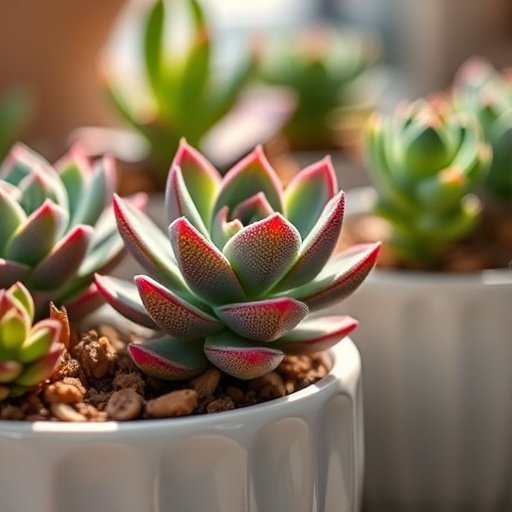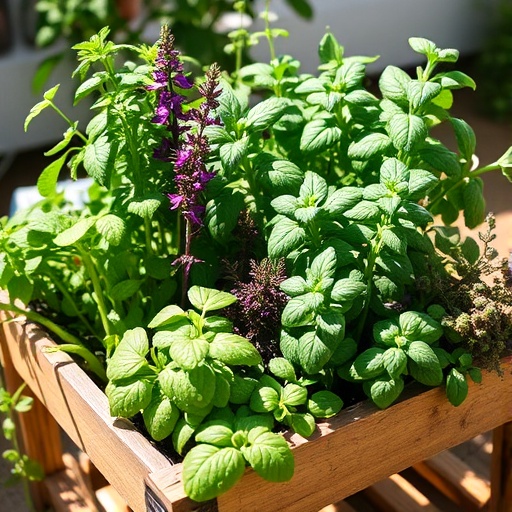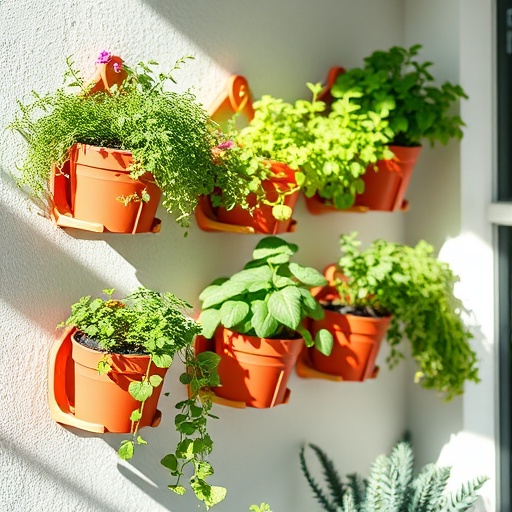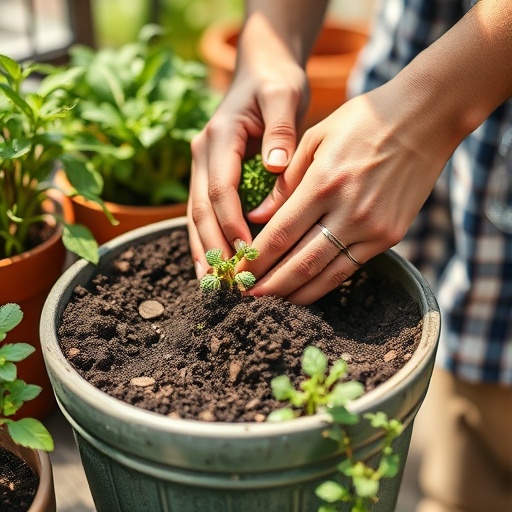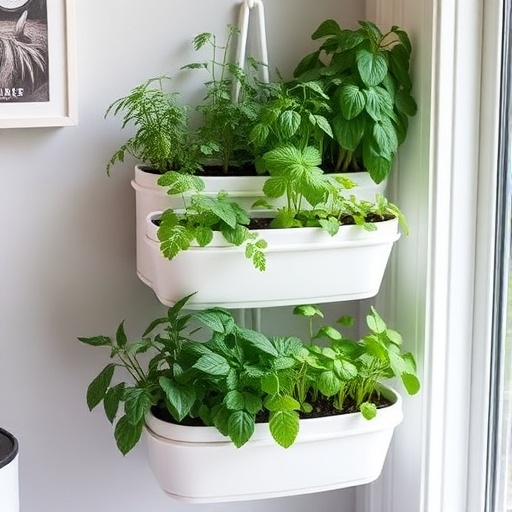Introduction
Have you ever wondered if it’s truly possible to cultivate those captivating, low-maintenance indoor succulents without the ever-present dread of overwatering? It’s a common dilemma, one that often leads hopeful plant parents down a path of soggy soil and wilting leaves. Many believe that succulents thrive on neglect, but the truth is, they thrive on intelligent neglect – specifically, an understanding of their unique watering needs. This guide will demystify the art of growing beautiful, thriving indoor succulents, ensuring your green companions flourish without succumbing to the dreaded and all-too-common issue of excessive moisture. We'll explore data-driven strategies and expert insights to help you build a resilient succulent collection from the comfort of your home.
Tools & Materials Needed
Successfully growing indoor succulents starts with the right foundation. Here’s what you’ll need to set your little desert dwellers up for success:
- Pots with Drainage Holes: Absolutely non-negotiable! Terracotta or ceramic pots are excellent choices as their porous nature helps with evaporation, reducing the risk of root rot. For eco-conscious growers, repurpose old coffee mugs or glass jars by carefully drilling a drainage hole at the bottom (use a diamond bit for glass/ceramic).
- Cactus/Succulent Potting Mix: This specialized soil drains quickly, preventing waterlogged roots. It’s typically a blend of potting soil, perlite, and coarse sand. Avoid standard potting soil, which retains too much moisture for succulents.
- Small Shovel or Trowel: For easy handling of soil and planting.
- Gardening Gloves: To protect your hands, especially if working with prickly varieties.
- Watering Can with a Long, Thin Spout: Essential for precise watering, directing water exactly where it's needed without disturbing the plant or splashing water onto leaves.
- Pebbles or Decorative Gravel (Optional): For a top dressing, which can enhance aesthetics and help reduce fungal gnats, but do not use them at the bottom of the pot as a "drainage layer" – this actually traps water.
- Moisture Meter (Optional but Recommended): A small investment that provides clear, data-driven insights into soil moisture levels. It takes the guesswork out of watering and is a fantastic tool for beginners.
Time & Effort Overview
Cultivating a thriving collection of indoor succulents is remarkably rewarding and generally less time-consuming than many other houseplants.
- Planting/Repotting: Expect to spend about 15-30 minutes per plant, depending on its size and intricacy. This is typically a one-time or annual activity.
- Initial Watering Schedule Setup: A few minutes to check soil and decide when to water, then about 1-2 minutes per plant for the actual watering. This happens significantly less frequently than for other plants – typically every 2-4 weeks.
- General Maintenance (Pest Checks, Pruning Dead Leaves): About 5-10 minutes every month or two.
- Difficulty Level: Beginner-friendly. Once you understand their specific needs, especially concerning water, succulents are incredibly forgiving. They certainly grow slower than typical herbs, often exhibiting noticeable growth over months rather than weeks, but their resilience makes up for it.
Step-by-Step Gardening Process
1. Choosing the Right Containers
Start with pots that have excellent drainage holes. As mentioned, terracotta is a fantastic choice for indoor succulents due to its breathability. Ensure the pot size is appropriate – generally, a pot that’s only slightly larger than the succulent’s root ball is ideal. Too large a pot holds excess soil, which retains unnecessary moisture.
2. Selecting Your Soil Mix
This is crucial for preventing overwatering. Use a specialized cactus or succulent potting mix. If you can't find one, you can create your own by mixing equal parts regular potting soil, perlite, and coarse sand. This blend ensures rapid drainage, mimicking their natural arid habitats.
3. Gentle Planting Begins
Carefully remove your succulent from its nursery pot. Gently loosen any compacted roots, but avoid aggressive handling as succulents are often delicate. Place a small amount of your chosen soil mix at the bottom of the new pot, set the succulent in, and then fill around the root ball with more soil, ensuring the plant sits at the same level it did in its original pot. Don't worry if a few leaves fall off – simply propagate them!
4. The Inaugural Watering
After potting, resist the urge to water immediately. Give the succulent a few days (3-7 days) to settle and allow any potential root damage to heal. This prevents immediate exposure to water, which can lead to rot. After this waiting period, water thoroughly until you see water draining from the bottom.
5. Positioning for Optimal Light
Most indoor succulents require at least 6 hours of bright, indirect sunlight daily. A south-facing window is often ideal. If you don't have enough natural light, consider supplementing with a grow light. Signs of insufficient light include stretched-out, pale growth (etiolation).
6. Establishing a Smart Watering Routine
This is where the magic happens for preventing overwatering. Instead of watering on a strict schedule, water only when the soil is bone dry. Insert your finger an inch or two into the soil, or better yet, use a moisture meter. Wait until the meter reads "dry" before watering again. When you do water, water thoroughly until it drains from the bottom. This encourages deep root growth.
Growth & Care Tips
The key to thriving indoor succulents lies in understanding their native environments and replicating those conditions as best as possible.
- Watering Frequency: As discussed, less is more. For most indoor succulents, this means watering every 2-4 weeks, sometimes even less in winter when they are dormant. Data shows that overwatering is responsible for approximately 70% of indoor plant failures, with succulents being particularly susceptible. Always err on the side of underwatering.
- Sunlight Exposure: Bright, indirect light is paramount. Direct, intense afternoon sun can sometimes scorch delicate varieties, so observe your plants for brown spots. Conversely, too little light leads to etiolation (stretching). Rotate your plants regularly to ensure even growth.
- Pruning: Remove any dead, shriveled, or yellowing leaves. This not only keeps the plant tidy but also discourages pests and disease. You can also "behead" leggy succulents to encourage bushier growth.
- Fertilization: Succulents are not heavy feeders. Fertilize sparingly, if at all, during their growing season (spring and summer) using a diluted cactus or succulent fertilizer (half strength, once or twice a year). Over-fertilization can burn roots.
- Pest Prevention: Inspect your plants regularly for common pests like mealybugs or spider mites. A diluted neem oil spray or rubbing alcohol swab can address infestations. Healthy, well-cared-for plants are naturally more resistant to pests.
Eco-Friendly & Sustainable Alternatives
Embracing sustainability in your succulent care is easy and rewarding.
- Composting: Repurpose any discarded succulent leaves or spent soil into your compost bin. Learn more about composting {"loc":["https://pincraftpro.com/how-to-grow-tomatoes-in-pots-2/"],"lastmod":["2025-10-08T15:09:24+00:00"]} if you're keen to enrich your gardening efforts.
- Natural Fertilizers: Instead of synthetic options, consider using worm castings or a dilute compost tea occasionally. These provide gentle, slow-release nutrients without chemical runoff.
- Water Conservation: Collect rainwater for watering your succulents. This is not only free but often contains beneficial trace minerals.
- Pot Repurposing: Before buying new pots, look for beautiful ceramic bowls, teacups, or even old tin cans that can be upcycled into planters (remember the drainage hole!).
- Small Spaces Solutions: Indoor succulents are perfect for small spaces! Create a vertical garden using tiered stands, hang small pots, or arrange a diverse collection on a narrow windowsill.
Creative Ideas & Uses
Indoor succulents are not just plants; they're living sculptures that add character to any space.
- Miniature Landscapes: Design enchanting miniature desert landscapes in shallow, wide bowls using a variety of small succulents, decorative rocks, and even tiny figurines.
- Terrariums (Open-Top): While closed terrariums aren't ideal due to humidity, an open-top terrarium with good airflow can be a stunning display piece for various succulents. Layer with gravel, charcoal, and succulent soil.
- Combine with Other Decor: Pair your succulents with natural elements like driftwood, crystals, or abstract art to create cohesive design statements.
- DIY Planters: Get crafty! Paint terracotta pots, decoupaged old cans, or create macrame hangers for a bohemian touch.
- Gift Ideas: A beautifully potted succulent makes a thoughtful, long-lasting gift. Add a personalized tag with care instructions.
Common Mistakes to Avoid
Even experienced gardeners can sometimes falter, but knowing these common pitfalls for indoor succulents can save you a lot of grief.
- Overwatering, the Arch-Nemesis: This is by far the most common mistake. Industry data suggests that 60-70% of houseplant deaths (especially succulents) are due to overwatering leading to root rot. When in doubt, wait another day (or five!).
- Lack of Drainage: Planting in pots without drainage holes is a direct path to root rot. Even a layer of pebbles at the bottom won't prevent this – it simply raises the water table closer to the roots.
- Insufficient Light: While they tolerate some shade, most succulents require bright light. Low light causes them to stretch, becoming leggy and weak.
- Using Regular Potting Soil: Standard potting mixes retain too much moisture, suffocating succulent roots. Always opt for a well-draining cactus/succulent mix.
- Watering Leaves Directly: Avoid getting water on the leaves, especially varieties with powdery coatings (farina). This can lead to unsightly spots or fungal issues. Water at the base of the plant.
- Ignoring Dormancy: Many succulents go dormant in winter or summer, requiring even less water during these periods. Understand your specific succulent's growth cycle.
Maintenance & Storage Tips
Long-term success with indoor succulents involves consistent, intelligent care.
- Repotting: Repot your succulents every 1-2 years, or when they outgrow their container. This provides fresh soil and an opportunity to check root health. Spring is generally the best time for repotting.
- Seasonal Care: Adjust watering based on the season. During winter dormancy, significantly reduce watering, often to once a month or even less. In summer, during active growth, they may need slightly more frequent watering.
- Troubleshooting Yellow or Mushy Leaves: This is almost always a sign of overwatering. Immediately cease watering, check the roots for rot, and allow the soil to dry out completely. If rot is severe, you may need to propagate healthy leaves or stem sections.
- Wrinkled or Shriveled Leaves: This indicates underwatering. Give the plant a thorough soak until water drains from the bottom. Leaves should plump up within a day or two.
- Seed Storage: If you ever collect succulent seeds, store them in a cool, dry, dark place in an airtight container to maintain viability.
Conclusion
Mastering the art of growing indoor succulents without falling victim to overwatering is entirely achievable with the right knowledge and a bit of practice. By understanding their unique needs for excellent drainage, ample light, and, most importantly, precise watering only when the soil is completely dry, you'll cultivate a thriving, resilient collection. These beautiful, low-maintenance plants offer immense aesthetic value and a rewarding gardening experience. So, shed the fear of the watering can, embrace these strategies, and watch your succulents flourish! We encourage you to start your succulent journey today and share your beautiful creations with us. What varieties are you excited to grow?
FAQ
Q1: How do I know if my indoor succulent is being overwatered or underwatered?
A1: Overwatered succulents often have mushy, yellow, or translucent leaves, and the stem might feel soft. Underwatering is typically indicated by shriveled, wrinkled, or dry, crispy leaves that may fall off easily. When in doubt, check the soil – if it's still damp, it's likely overwatering; if bone dry, it may be underwatering.
Q2: What's the best way to water indoor succulents to prevent overwatering?
A2: The "soak and dry" method is ideal. Water thoroughly until water drains from the bottom of the pot. Then, do not water again until the soil is completely dry, usually 2-4 weeks. A moisture meter can be a great tool to confirm soil dryness.
Q3: Do all indoor succulents need the same amount of sunlight?
A3: While most indoor succulents prefer bright, indirect light for at least 6 hours daily, their exact needs can vary. Rosette-forming varieties often appreciate more light, while some trailing or shade-tolerant types might do well in slightly less intense conditions. Observe your plant's growth – stretching or pale leaves indicate insufficient light.
Q4: Can I use regular potting soil for my indoor succulents?
A4: No, regular potting soil retains too much moisture and is a primary cause of overwatering and root rot in indoor succulents. Always use a specialized cactus or succulent potting mix, which is formulated for quick drainage.
Q5: My succulent is getting leggy and stretched out. What's wrong?
A5: This is known as etiolation and is a clear sign that your indoor succulent is not receiving enough light. Move it to a brighter location, preferably a south-facing window, or consider supplementing with a grow light. You can also "behead" the stretched plant to encourage bushier growth from the base.
Q6: How often should I fertilize my indoor succulents?
A6: Succulents are not heavy feeders. Fertilize sparingly, if at all. During their active growing season (spring and summer), you can use a highly diluted (half-strength) cactus or succulent fertilizer once or twice. Over-fertilization can harm them.
Q7: What kind of pots are best for indoor succulents?
A7: Pots made from porous materials like terracotta or unglazed ceramic are excellent for indoor succulents because they allow water to evaporate more readily, preventing root rot. Critically, ensure any pot you choose has at least one drainage hole at the bottom.
You may also enjoy reading about how to nurture your indoor garden:
- {"loc":["https://pincraftpro.com/how-to-grow-tomatoes-in-pots-2/"],"lastmod":["2025-10-08T15:09:24+00:00"]} (Even if not succulents, principles of container management apply!)
- Discover more inspirational succulent arrangements and care tips on Pinterest for visual guidance.
- Explore other indoor plant care guides to expand your green thumb knowledge!
